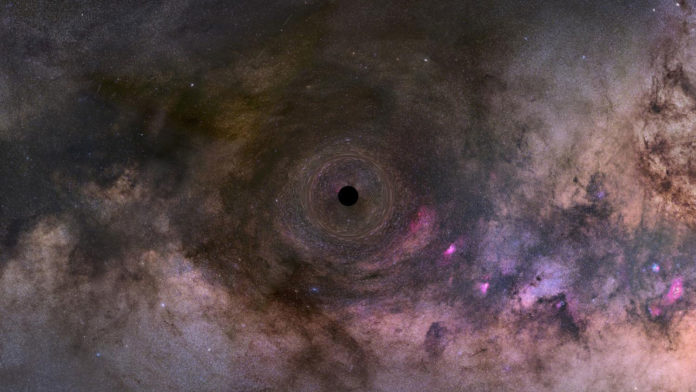For the first time, NASA’s Hubble Space Telescope has offered compelling evidence for a lone black hole wandering through interstellar space after six years of meticulous observations. This black hole lies about 5,000 light-years away, in the Carina-Sagittarius spiral arm of our galaxy.
This black hole has a mass of only 7.1 times that of the sun, hence astronomers dubbed it a ‘stellar-mass’ black hole.
Penn State astronomer Howard Bond said, “There are very likely many of these objects in the Milky Way, but they are extremely difficult to detect since they emit no light. Ours is the first to be identified based on the black hole deflecting the image of a background star that it passed closely in front of.”
Black holes that roam our galaxy originate from rare, monstrous stars at least 20 times more massive than our sun. These stars explode as supernovae, and the remnant core is crushed by gravity into a black hole.
The black hole may receive a kick since the self-detonation isn’t wholly symmetrical and careen through our galaxy like a blown cannonball.
The discovery was made- in a survey aiming to identify isolated black holes- by Kailash Sahu of the Space Telescope Science Institute in Baltimore, Maryland, and his team. Because of the gravity of a foreground object passing in front of a faraway star, the background star’s light is suddenly bent and amplified as it passes in front of it. The phenomenon, known as gravitational microlensing, is used to examine stars and exoplanets among the roughly 20,000 instances that have been observed so far within our galaxy.
The signature of a foreground black hole stands out as unique among other microlensing events. The very intense gravity of the black hole will stretch out the duration of the lensing event to over 200 days.
Here comes Hubble. The team used Hubble to measure the amount of deflection of the background star’s image by the black hole. Hubble possesses the extreme precision required for such observations. The idea of the star was two milliarcseconds off from where it should have been. As seen from New York City, that’s the same as measuring the diameter of a 25-cent coin in Los Angeles.
This technique offered vital information on the black hole’s mass, distance, and velocity. The team estimated the black hole’s mass to be around seven solar masses based on the amount of deflection caused by its severe warping of space. The isolated black hole speeds up the cosmos at 90,000 miles per hour. That’s faster than most other stars in our galaxy’s nearby neighborhood.
Kailash Sahu of the Space Telescope Science Institute in Baltimore, Maryland, said, “Astrometric microlensing is conceptually simple but observationally very tough. It is the only technique for identifying isolated black holes.”
“Detections of isolated black holes will provide new insights into the population of these objects in our Milky Way.”
A paper describing the discovery has been accepted for publication in the Astrophysical Journal.
